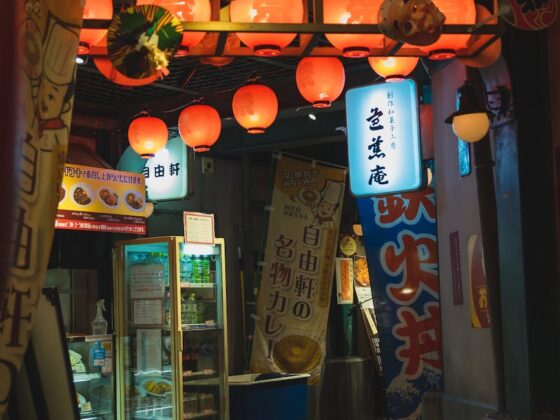Japanese Train Station Cuisine
Evolution of Ekiben
Ekiben, or “train station bento,” originated in Japan in 1885 at Utsunomiya Station. Shirokiya, a vendor at the station, wrapped two rice balls in bamboo leaves and sold them, marking the beginning of a beloved culinary tradition (gltjp). As Japan’s railway network expanded, so did the variety of ekiben offered. By the 1950s, over 4,000 distinct types of station bentos were available, reflecting the country’s economic growth and the flourishing food culture associated with train travel (gltjp).
By the 1980s, ekiben had transformed into a cultural necessity, with specific regional varieties only found at certain train stations, which added a unique touch to any journey. These on-the-go meals are designed to provide a taste of local flavors and showcase a range of dishes, from simple options such as omelets and rice balls to extravagant selections like sea urchin or Wagyu beef (Boutique Japan).
Uniqueness of Regional Ekiben
The diversity of ekiben is a highlight for travelers. Each region offers specialties that reflect its local ingredients and cooking styles. This unique characteristic enhances the travel experience, as tourists can enjoy a taste of the region while using the shinkansen.
Here is a table featuring some of the notable regional ekiben and their specialties:
| Region | Ekiben Name | Specialty |
|---|---|---|
| Tochigi | Utsunomiya Ekiben | Rice balls wrapped in bamboo leaves |
| Kyoto | Tsukimi Ekiben | Grilled beef tongue and seasonal vegetables |
| Nagoya | Hitsumabushi | Grilled eel served over rice |
| Hiroshima | Momiji Manju Ekiben | Traditional sweet buns shaped like maple leaves |
| Hokkaido | Seafood Ekiben | Fresh local seafood items (e.g., crab, salmon) |
The variety of options available means that every journey by train can offer a different culinary adventure. For those planning a trip, sampling the seasonal foods at Japan train stations is highly recommended. Each bite offers a glimpse into the culture of the area, making ekiben not just food, but part of the travel experience.
Seasonal Foods at Train Stations
Travelers seeking culinary delights while navigating Japan’s extensive train system will find seasonal foods at train stations to be a remarkable experience. These offerings are not only delicious but also showcase local specialties and regional ingredients.
Diversity of Flavors
At Japanese train stations, the array of seasonal foods reflects the unique characteristics of each region. The concept of ekiben, or train station bento boxes, allows passengers to enjoy a variety of flavors that are integral to the cultural fabric of the area they are traveling through.
| Type of Ekiben | Common Ingredients | Price Range (Yen) |
|---|---|---|
| Simple Meals | Omelets, Rice Balls, Tempura | Under 1,000 |
| Gourmet Options | Wagyu Beef, Grilled Beef Tongue, Sushi | 3,000 and above |
Ekiben are crafted from the freshest local ingredients, as the tradition of using regional produce has been maintained since the inception of railroads in Japan. This culinary approach ensures that tourists experience the best flavors of each locale as they travel. Travelers can explore flavors ranging from the rich umami of sea urchin to the savoriness of grilled gyoza.
Specialties to Try
When traveling through Japan, certain seasonal specialties should not be missed. For example, in areas known for their seafood, travelers will find ekiben filled with fresh fish and shellfish, while mountainous regions may offer hearty options featuring locally sourced vegetables and meats.
Some popular specialties to try include:
- Wagyu Beef: A luxurious delicacy, known for its marbling and flavor.
- Stewed Eel: A flavorful option that often varies from region to region.
- Sushi: Fresh and unique sushi varieties are often featured in ekiben, reflecting local fish catches.
- Tempura: Lightly battered and fried vegetables or seafood, offering a crunchy texture.
Larger train stations typically have shops with an extensive selection of ekiben from various regions, making it easy for travelers to sample different foods. Smaller stations, however, often focus on local specialties sold through glass cabinets or nearby counters.
For more about utilizing Japan’s train system for culinary adventures, consider reading up on shinkansen travel hacks or reserve your seats with reserve shinkansen seat. Enjoying seasonal foods is not just a feast for the palate but an exploration of Japan’s rich regional diversity.










